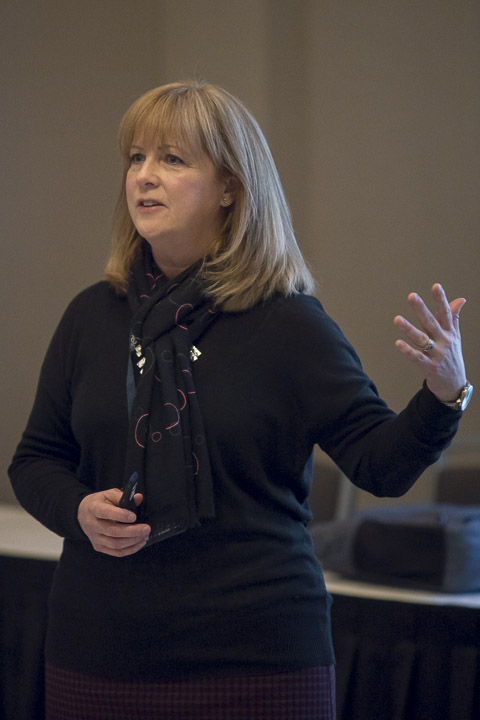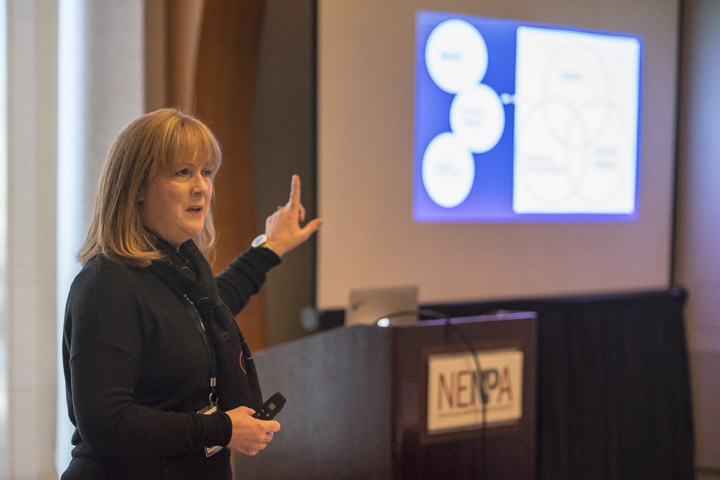
‘If one person on a social media team is deciding on his or her own what to respond to, or what’s valid and what’s not, that is a little disturbing.’
— Jane Elizabeth, Director of accountability journalism, American Press Institute
How social media teams
can and should combat fake news
By Jess DeWitt
Bulletin Staff
In an era beleaguered by fake news, having a strong social media team is the best way for newsrooms to combat the spreading of misinformation, according to Jane Elizabeth, director of accountability journalism for American Press Institute in Arlington, Va.
Elizabeth, who researched newsrooms after the 2016 election, said she wants news outlets to use social media teams better and to give them a bigger role.
“One thing that we kept noticing is that the social media team … really had very little to do with the elections and with finding the fake news that really arose during early 2016 and the run-up to the election,” Elizabeth said. “Which was very confusing to me because the social media team is on the front lines of these issues. There is no one in the newsroom that would know more about what’s happening on social media, about who’s sharing fake news, and how it spreads.”
Elizabeth noticed that not many newsrooms were using their social media team properly. She said creating engagement opportunities, doing live events, finding influencers in the community, and finding misinformation and correcting it, were the four main objectives on which social media teams should focus. But she said many of them are failing at that and instead are focusing on getting viewers.
“The thing that (social media teams) do most is post links,” Elizabeth said. “Post links to content, photos and stories, obviously. They are always, always posting things.”
They are also tracking clicks to find out how well those stories are doing in viewership, and responding to online comments.
“They were searching for stories that were doing really well from other media outlets, and seeing if they could match it,” Elizabeth said. “They were looking for click-buzzy stories out there that their competitors had, and then posting those links.”
But nobody was really responding to misinformation that was spreading online, which Elizabeth asked about in the newsrooms she researched. Those she asked said they rarely engaged commenters spreading misinformation because they said the comments were unfounded, and that they ignored them and instead focused on their news outlet’s mission.
“I wonder who is making that decision, if there is some sort of strategy for determining what is a valid comment, or what to respond to. If one person on a social media team is deciding on his or her own what to respond to, or what’s valid and what’s not, that is a little disturbing,” Elizabeth said.
Elizabeth said social media teams can improve on tackling that issue by making sure they have a deep understanding of metrics, a deep knowledge of existing and up-and-coming platforms, and have the skills of the most experienced reporters.
She ended with a question she has asked herself since doing her research: “What if social media teams had a strategy to spot and correct misinformation (during the 2016 election)?”

